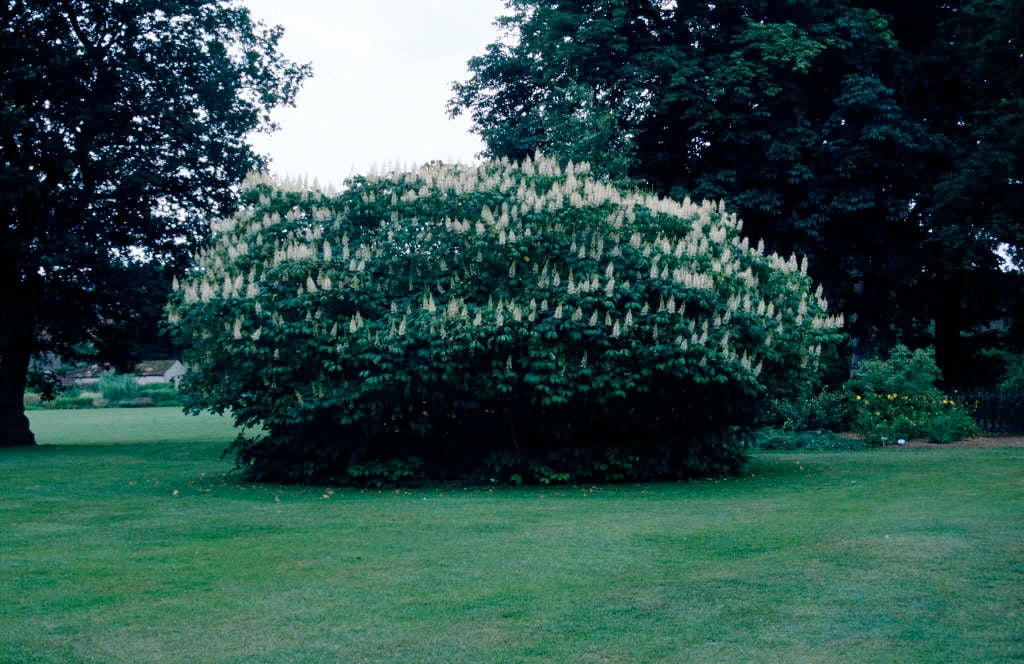Aesculus parviflora

bottlebrush buckeye
A large suckering deciduous shrub with palmate leaves which open bronze, then dark green, turning yellow in autumn. Erect panicles of white flowers with prominent stamens, are sometimes followed by smooth fruits
Size
Ultimate height
2.5–4 metresTime to ultimate height
10–20 yearsUltimate spread
4–8 metresGrowing conditions
Moisture
Moist but well–drainedpH
Acid, Alkaline, NeutralColour & scent
| Stem | Flower | Foliage | Fruit | |
| Spring | Bronze | |||
|---|---|---|---|---|
| Summer | White | Green | ||
| Autumn | Yellow | Green | ||
| Winter |
Position
- Full shade
- Full sun
- Partial shade
Aspect
North–facing or East–facing or South–facing or West–facing
Exposure
Exposed or Sheltered Hardiness
H5Botanical details
- Family
- Sapindaceae
- Native to GB / Ireland
- No
- Foliage
- Deciduous
- Habit
- Suckering
- Potentially harmful
- Humans/Pets (dogs): harmful if eaten. Wear gloves and other protective equipment when handling For further information and contact numbers regarding pets, see the HTA guide to potentially harmful plants
- Genus
Aesculus can be deciduous trees or large shrubs with showy flowers, palmately-lobed leaves and sometimes good autumn colour
- Name status
Correct
- Plant range
- USA (Alabama, Georgia)
How to grow
Cultivation
Grows well in well-drained soil
Propagation
Propagate from suckers
Suggested planting locations and garden types
- Cottage and informal garden
- Wildlife gardens
Pruning
Pests
May be susceptible to horse chestnut scale and leaf-mining moth
Diseases
May be susceptible to coral spot, canker, leaf spot and honey fungus
Love gardening
Sign up to receive regular gardening tips, inspiration, offers and more
View our Privacy Policy
Get involved
The Royal Horticultural Society is the UK’s leading gardening charity. We aim to enrich everyone’s life through plants, and make the UK a greener and more beautiful place.

